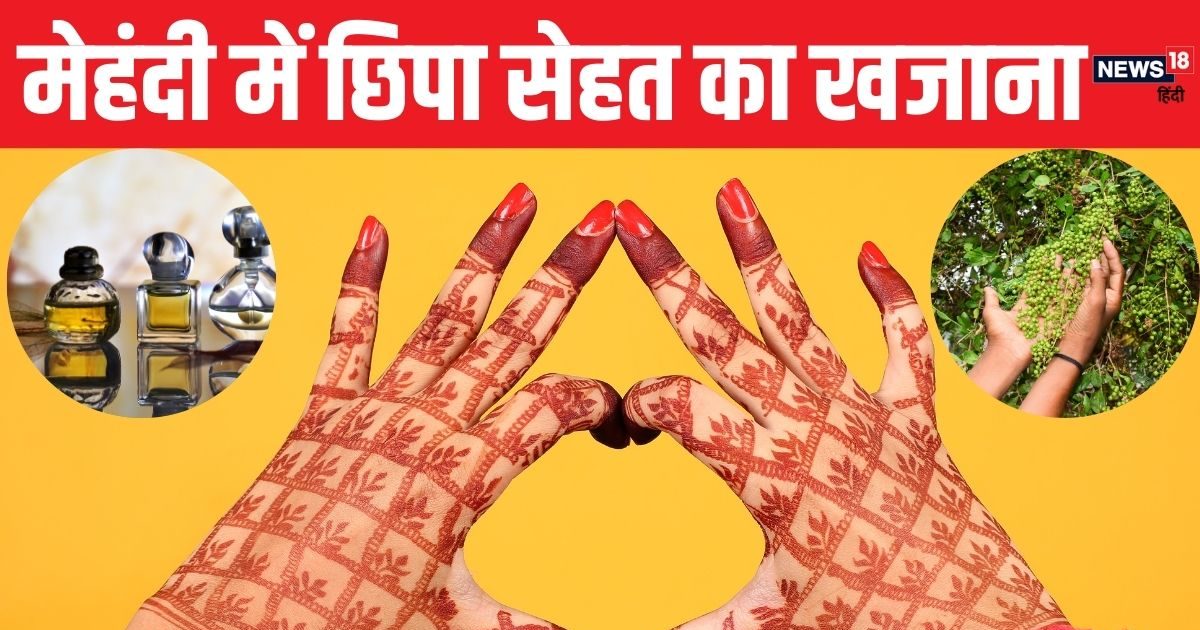Just as every wedding is incomplete without Mehndi night, similarly every festival is incomplete without Mehndi. On Karva Chauth, every married woman applies mehendi in the name of her beloved with great enthusiasm. Mehndi comes in 16 styles, hence it is considered a sign of marriage. Mehndi is applied not only by women but also by men. Apart from Hindus, there is a custom of applying mehndi in Muslim society also. Mehndi is known as Henna in foreign countries and many foreigners also get tattoos made of it. The tradition of applying henna is thousands of years old. As much as it is used for beautification, it is also used in the treatment of many diseases.
clear dandruff
Ayurvedacharya S Katiyar It is said that henna has anti-fungal properties which remove many types of problems. Applying henna removes dandruff from the scalp. If someone has swelling, itching and rashes in the scalp then henna is beneficial. This provides coolness and the pH level of the skin also remains balanced. But packaged henna sold in the market should be avoided because it contains chemicals. Always use henna only after plucking its leaves from the tree.
reduced pressure ulcers
Pressure ulcers, also known as bedsores, occur when lying on the bed for a long time puts so much pressure on the skin that the skin and tissue get damaged. It occurs more in bony areas such as the back, hips, ankles and heels. of America National Library of Medicine in iran Isfahan University of Medical Sciences Study report published. In this study, henna was found beneficial for pressure ulcers. Mehndi is also called Lawsonia plant. In a clinical trial, henna mixed with distilled water was applied to pressure ulcer patients every day. Within a few days the area affected by ulcer started healing.

Mehndi flowers and leaves are used to make perfume (Image-Canva)
Is jaundice and diarrhea okay?
Science Direct According to Hindustan Times, the root of henna, called Alkanna tinctoria, has been used to cure jaundice for thousands of years. Apart from this, its root also cures diarrhea caused by dirty water. In many countries of the world, its root has been used to treat liver related diseases.
Get rid of headache and irritation
Mehndi is cold, so if someone gets burnt then Mehndi gives immediate relief. Apart from this, it also provides immediate relief from sunburn and headache. Henna removes excess heat from the body, hence women who are going through menopause and are troubled by hot flashes, i.e. they feel sudden heat from the body and sweat a lot, then they should apply henna on the head. Mehndi controls body temperature.
Perfumes are made from henna and clothes are dyed.
Mehndi has natural red color. Actually, henna leaves contain a chemical called Lawson which is a natural dye. When it reacts with keratin present in skin, hair and nails it leaves a red color. Wool, silk and leather are colored with henna. Due to this it also remains preserved. Mehndi is also used to make perfume. This has been happening since ancient Egypt.

In foreign countries, tattoos are done with henna (Image-Canva)
Who invented Mehndi?
British Natural History Museum According to this, Mehndi was discovered by a shepherd. When his goat ate henna leaves, its face turned red. In such a situation, the shepherd felt that the goat had been hurt. Mehndi was first used in the Gulf countries because it is very hot there. Since henna gives cooling effect, its paste started being applied on the feet and head. Mehndi gives the same cooling effect as a wet towel does. Gradually Mehndi became a part of fashion and art.
Mummy being painted in ancient Egypt
The first use of henna was found in ancient Egypt. Its color is found in mummy. There the mother was covered with henna paste. The people there used to associate Mehndi with spirituality. The lotion present in henna strengthens the skin and protects it from decay. Some mummy’s hair were also colored with henna. Henna was also used to treat ringworm in ancient Egypt.
When did Mehndi become fashionable?
Evidence has been found of using mehndi as a fashion in the Punic civilization of North Africa about 2 thousand years ago. Even in the Bronze Age, women used to decorate themselves with henna. She used to make tattoos on her body with it. Historians believe that the Mughals brought Mehndi to India around 1526. During the Mughal period, men and women used to apply mehndi with great enthusiasm on their heads, feet and hands. Gradually the fashion of wearing it spread throughout India.
Tags: beauty treatments, global disease, hair beauty tips, Health, Karwachauth 2020, middle east
FIRST PUBLISHED: October 19, 2024, 12:51 IST
